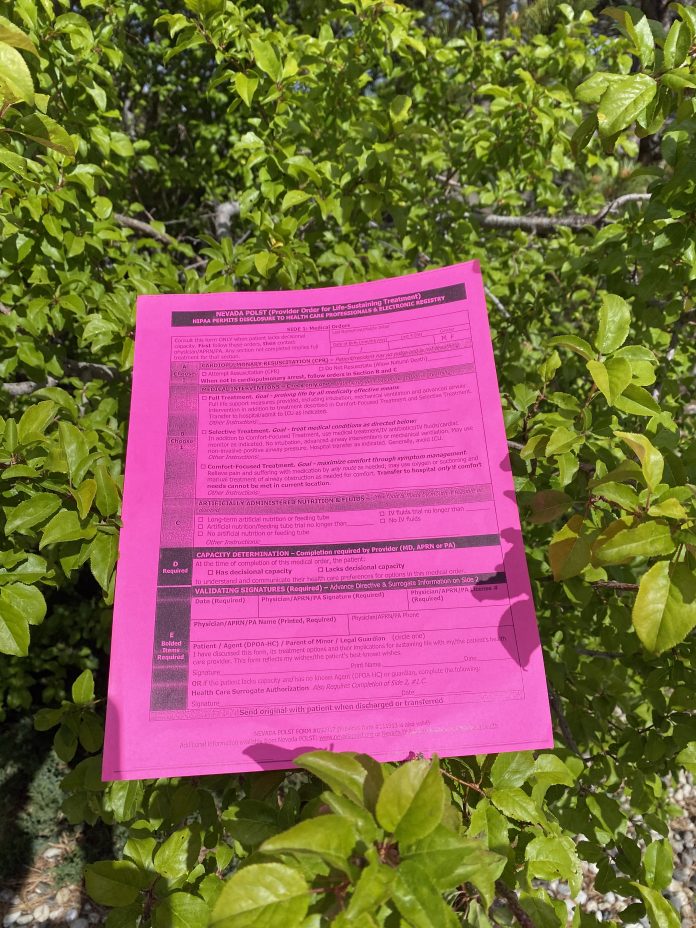WHO?
Old age is not necessarily a determining factor for a POLST, although the majority of POLSTs are completed for the elderly. The criterion is if the patient’s provider would not be surprised should the patient pass away within one year. Patients who are near the end of a life-limiting disease process, terminally ill or frail would greatly benefit from a POLST.
WHAT?
The POLST is a Provider Order for Life-Sustaining Treatment form. Provider is defined by each State and may include a physician, APRN ( advanced practice registered nurse) or PA ( physician assistant). Look at it as both a legal document and a portable medical order that allows patients to express their wishes for current and future medical care when they no longer possess capacity. Capacity is determined by their provider at the time of the completion of the POLST and is their ability to understand and communicate their health care preferences for options in this medical order. If the patient is able to express their wishes the POLST is not necessary. Think of the POLST as what the patient wants done now.
WHEN?
The POLST is filled out by the patient and their health care provider. The medical care provider must determine a patients capacity at the time of the POLST signing. If the patient lacks capacity then the AGENT ( Durable Power of Attorney) or guardian or health care surrogate may help fill out and sign the POLST. It is best addressed while the patient is still able to communicate their personal wishes and help in the decision making process. It must be signed by their health care provider to be a valid legal order. The POLST can be modified or updated by the patient and their health care provider since patients’ conditions change over time.
WHERE?
Your POLST should be with you at all times. Common practice is to place the POLST on the refrigerator door or next to their bed. This is where the EMS providers are trained to look and it should be easily seen by EMS (emergency medical providers) providers. In a care facility it should be in the medical record and in a place easily identifiable to care givers and EMS providers in case of an emergency.
WHY?
Too many people receive care at the end of life that is not consistent with their values. The POLST helps avoid this by determining whether a patient wants to receive more aggressive treatment, some intermediated measures or comfort focused care. The POLST allows patients to communicate their desired health care treatment currently and in the future in the event they no longer have the ability to do so on their own. This includes treatments they do and do not want to receive.
POLST VS DNR (Do Not Resuscitate) VS AD (Advanced Directive)
A POLST is a medical order that is valid in any setting. A DNR order is only valid in a healthcare facility. An AD is a legal document, not a medical order so it cannot be followed by healthcare personal such as EMS unless a provider writes a medical order to stop resuscitation. EMS must initiate CPR even in the presence of an AD stating the patient does not want CPR because an AD is not a medical order, it is a legal document. DNR orders are used in circumstances when a patient has lost their pulse, not breathing or near death and can no longer communicate.
The POLST is much more than just a DNR order. It can provide guidance for health care providers to follow including whether or not a patient wanted full, partial or comfort care only. These decisions can include, but are not limited to the use of IV fluids, antibiotics, feeding tubes, intubation and placement on ventilators, or even whether or not a patient wants to be hospitalized or placed into the ICU (intensive care unit).
Conclusion
POLST forms are not required but are extremely helpful to insure the patients wishes are fulfilled at or near the end of their life. Not only does the POLST direct the care of the patient but it also helps family, friends and medical health care providers understand the wishes of the patient when they can no longer communicate.
























